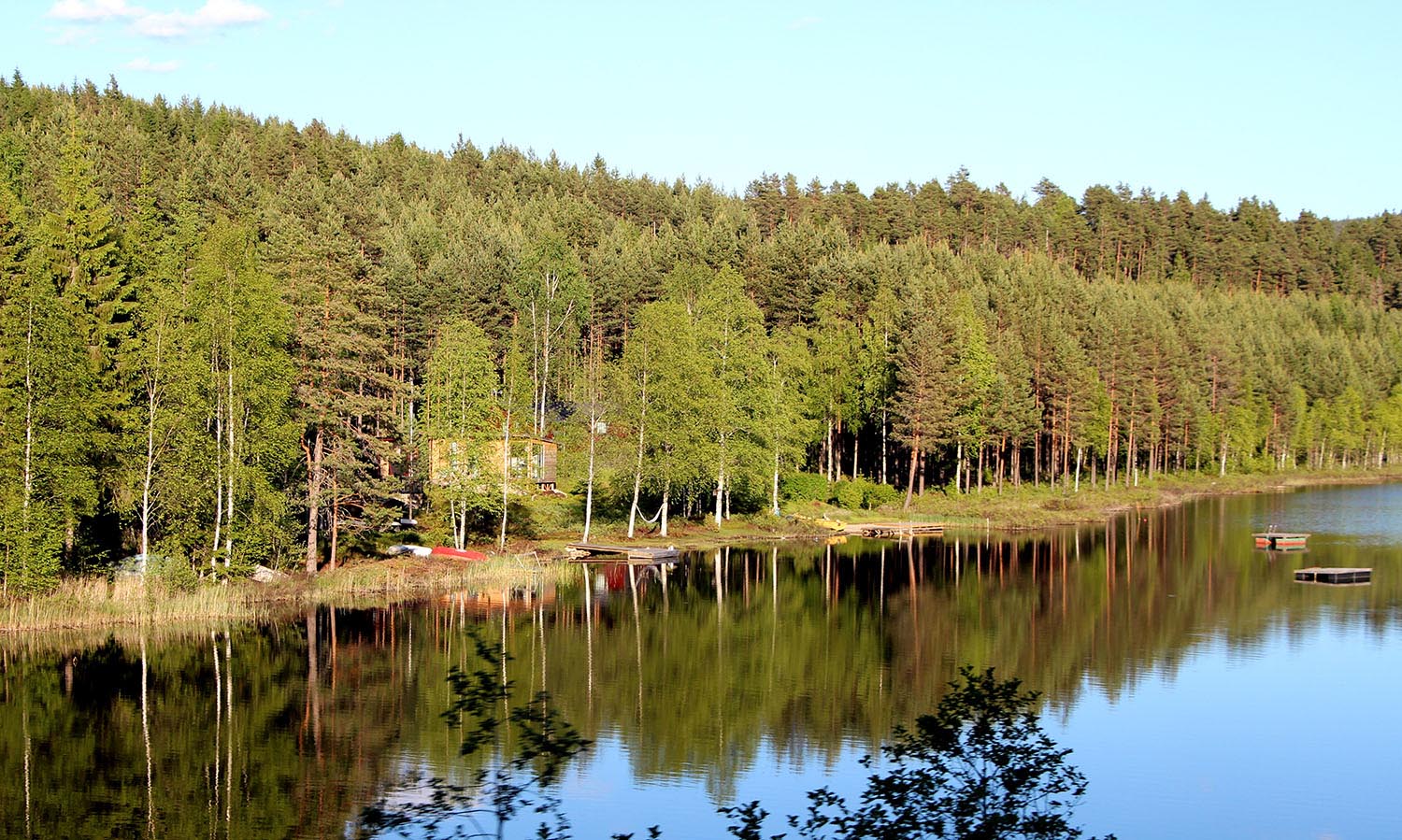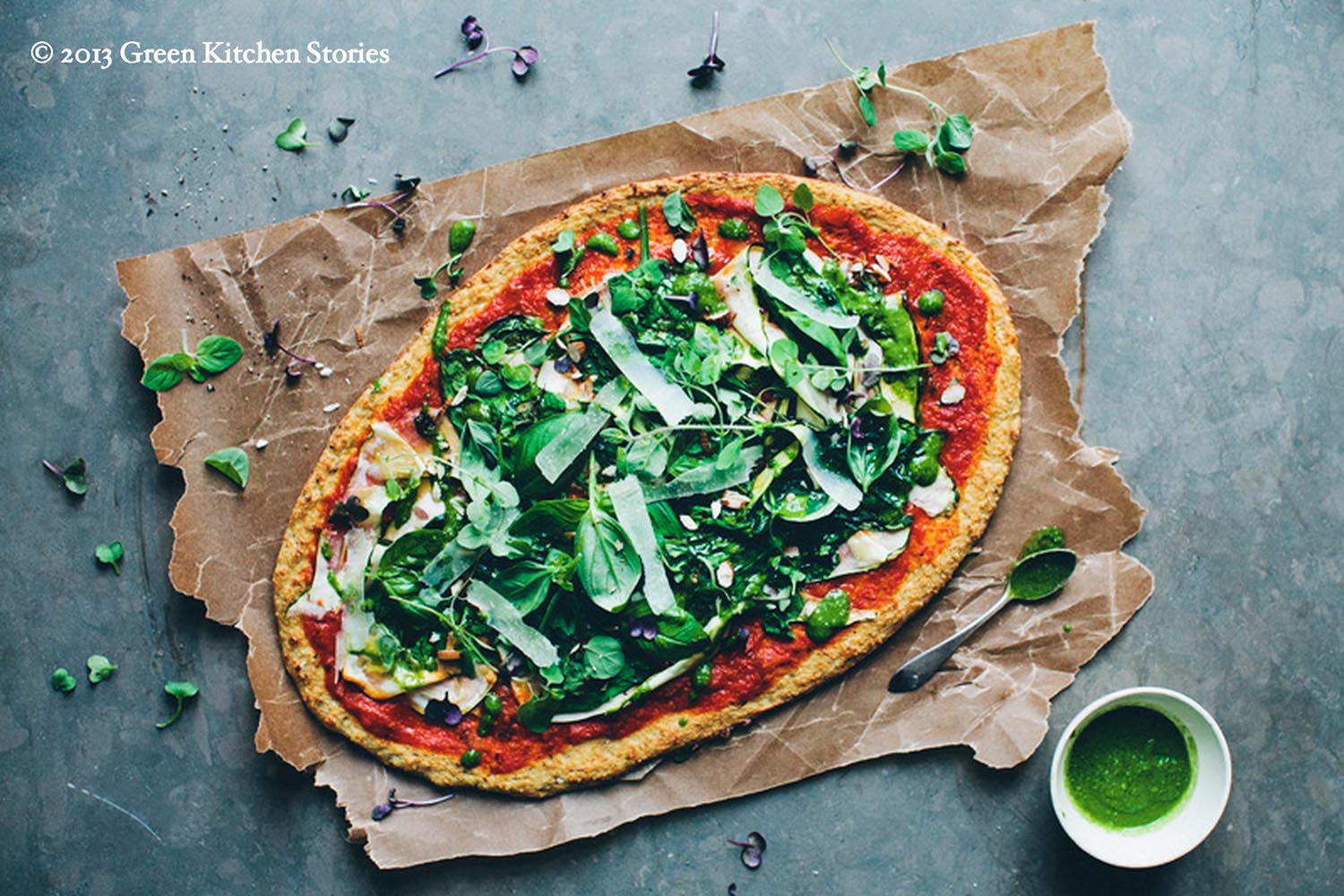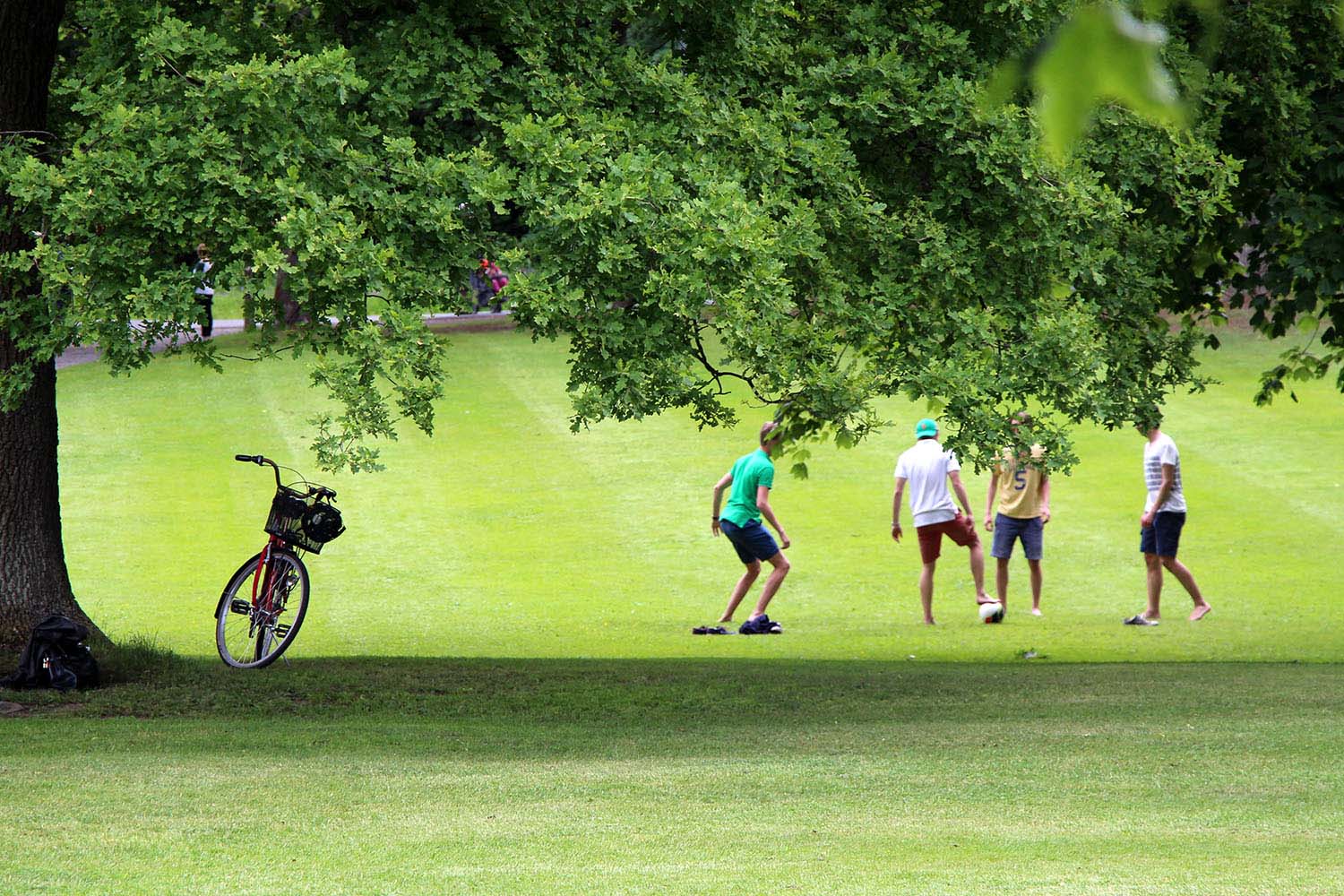David, an art director, and Luise, a nutritional therapist, are our bloggers from Stockholm. Tireless travellers, lovers of aesthetic beauty and naturally creative, they are among the best people working in healthy food in Europe; half the world is in love with Green Kitchen Stories, their vegetarian recipe blog.
Despite being famous, they are really friendly and humble. They make a lovely couple: he’s a calm, cheerful Swede and she’s an energetic Dane with very clear ideas. They explained that their hobby turned into a big project, and they’re surprised at how far it’s come. They also talked about how easy, delicious and varied healthy vegetarian food can be, exactly what they make every day.
They’ve lived in the heart of Stockholm for four years with their daughter Elsa and they combine their jobs with blogging about everything around them. They managed to find the time for an evening with us at one of their favourite restaurants in Stockholm, and they gave us lots of incredible recommendations for the city and the surrounding area, which we’re sure you’ll love.
THEM
RECOMMENDATIONS
Favourite recipe
– David: Korean wraps (consists of lots of little bowls with different vegetables, sauces and spices, then taking a leaf and rolling it up. It’s super fresh and really tasty. And you can eat it with your hands!)
– Luise: Raw buckwheat porridge
Star recipe
– Frozen cheesecake
– Our version of falafel
Blogs:
– Happyoats and 101 Cookbooks
Restaurant
– Otolengui in London (healthy Middle Eastern cooking)
– Rosendalsgarden (we often go there to have picnics, usually in the apple tree fields)
How did Green Kitchen Stories come about?
[They laugh] It’s actually quite funny. Everything started in Italy, where we got to know each other. I [David] have always been vegetarian and back when I lived in Italy I only ate pasta, pizza and gelatto. On the other hand, Luise didn’t eat anything like that at all; she has always been very healthy eating organic produce, wholemeal, no gluten… So when we went back to Sweden to live together we had to find some common ground in the kitchen.
Sounds like quite a challenge!
You can say that again! At the start it was tricky, I thought that eating healthily wouldn’t ever taste as good as pasta or pizza; I could only see restrictions. Then we started to experiment together to find some common ground. I learned how to use alternatives to flour, sugar and all refined products; and she started cooking only with vegetarian food. When we made these changes, and with a bit of time too, around 6 months, we realised that the food we made every day in the kitchen was quite special and we decided to start taking photographs of it and collecting them.
Healthy vegetarian food.
Yeah, exactly. But it’s normal, everyday food, not extravagant restaurant recipes; recipes for a Thursday evening, you get what I mean? We thought it was obvious, but we realised that there weren’t many people doing this. Then we couldn’t see any restrictions, it was completely the opposite: wholemeal, fresh, healthy food had unlimited possibilities we hadn’t even imagined up to then. A conventional diet immediately becomes meat or fish with a side dish, or pasta or pizza. We are looking for extreme variety in the widest sense of the word, and we want to do it creatively and have fun at the same time.




A hobby that’s now become a profession.
Yes, we are amazed and thankful at how everything has worked out. In fact, Luise dedicates half her working time to it and the idea is that we can both do that. We just think it’s brilliant that we can merge such different jobs –I for example work in magazines and she is involved in social issues and nutrition– into a really inspiring joint project; it really fulfils us and we are so happy about it.
Who does what?
We split the tasks quite a bit, but there are some clearly defined roles. He’s the stylist and the photographer and does all the desserts as he’s really precise. On the other hand, I do most of the other recipes because I like to improvise. We share the writing.
Elsa appears on the blog often too.
Yeah, she likes to work in the kitchen with us! She’s interested in it and she already knows a lot about food and eating. She knows the names of all the vegetables, pulses and plants… We try to make eating fun for her as food is a really big thing in our lives.
COOKING
How would you define your cooking style?
Vegetarian cooking, simple, attractive and above everything else, delicious! We always keep it healthy.
Does Green Kitchen Stories have a message?
We believe that, in order to be really healthy, food should essentially be based on vegetables, even if you’re not vegetarian. Our task is to inspire you to incorporate more of them into your everyday dishes.
How?
We explain what to buy, how to prepare it and why, and we try to make it fun. We have loads of recipes in which we talk about the ingredients and different ways to cook and prepare them: fermenting, macerating, soaking, germinating… There’s something for everyone. We show that it’s easy and everyone can do it.
What’s the essential feature of your cooking?
Variety. We don’t want to be pigeonholed so we really try to make it varied. We have completely raw dishes, others that are cooked, some that are a combination, vegan, vegetarian… We want to offer as much variety as possible but still keep it healthy.




Vegetarianism is often seen as being restrictive.
Yeah, due to a lack of knowledge and experimentation. After 17 years, my family still asks me “son, what can we cook for you” when I go back home. And I think “for goodness sake, we have hundreds of recipes on the blog. Choose one!» But they always end up cooking salmon, potatoes and salad. And vegetarians only have salad…
A classic problem.
Unfortunately yes. The problem is that, culturally, we are used to a dish being mainly animal protein and everything else is just a side dish. Instead of thinking of them as side dishes –vegetables, pulses and wholegrain cereals–, they should become the focus of the dish.
How do we change this situation?
By being creative! When you make a hamburger or steak, you don’t have to think; you throw it in the frying pan and fry it. But if you have a courgette or a pepper, you can’t just fry it; you have to do something to it, you have to understand it, manipulate it, combine it with other ingredients… That makes you pull up your socks and get creative, and you learn a lot in the process.
How can we get started?
One way of getting started is choosing a day of the week, say Monday, and only make vegetarian dishes that day. You could start by making soups and stews, which are really easy. The next level is making a green shake for breakfast. You don’t have to do everything at once, but I think starting with a “green day” once a week is a good idea. I think everyone could do it; that’s enough to get started and start feeling the changes.





And what about other kinds of food?
We believe that you need a natural relationship with unhealthy food. So, if you’re at a party, it’s OK to eat the cake, but you need to be very clear about the food you eat every day. We don’t like playing tricks: being on a strict diet and then having a day off for example. No way! We think it’s perfectly OK and normal to eat an unhealthy cake some days. We need to have a natural relationship with all kinds of food.
And what do you do with Elsa?
We simply want to teach her how to eat well, how to tell the difference between what is healthy and what’s unhealthy, so she can make her own decisions. But we never force her or prohibit anything. For example, she’s never eaten conventional biscuits, but if someone gave her an unhealthy cookie, we wouldn’t take it from her, as that would create a bad feeling. She has to be the one experimenting, making her own decisions.
So she has complete personal freedom.
Yeah, exactly. You should never feel guilty for eating differently from others. Eating is pure enjoyment and feeling good about yourself. If blame comes into it, something’s not working right. We eat what makes us feel good.
What ingredients do you always have in the kitchen?
All kinds of dried fruit, seeds and wholegrain cereals and the flours from them. It looks as if we collect them at home [laughs]. We also have fruits from the forest; fresh when it’s warm outside and frozen in the winter.
An ingredient we should discover?
Buckwheat. It’s one of our favourites. It’s a seed in fact, gluten free and has loads of possibilities.
How do you use it?
We soak it and then cook it. You can make it like porridge or use it like rice. You can also germinate it and put it in salads or use it in flour form to make sweet dishes and pastries.
What wild plants do you use?
Fresh nettles and violets above all in spring, which we pick ourselves.



LIFESTYLE
What do you consider to be a healthy lifestyle?
In fact, it’s about a lot of things, not just food: constant physical exercise, being active –we go by bicycle everywhere–, sleeping well and for as long as you need, playing and spending time in nature, listening to your personal needs and taking care of your body seriously, having healthy relationships with everyone around you and above all, chasing your dreams! Essentially, you have to do what you imagine yourself being; that’s the healthiest thing of all!
And how have you brought up Elsa with this vision?
Children do as you do, not what you say they should do. If we eat this kind of food and it’s the only one available, well obviously she’ll eat it. It’s normal for her to have healthy food around her. We cook and then eat around a table. And it’s the same for everything else. It’s worked up to now, and it’s been easy and smooth.
Leading by example.
Exactly. There are a lot of families in which the woman eats more vegetables, but the guy is more about meat and potatoes; so the kids see that there are differing opinions about vegetables. We are very clear about what we want to eat and how we want to live as a family, and that’s what brings us both together without confrontation. The problem is when there are conflicts. Kids see everything. The only thing you can do in fact is inspire. If we have chickpeas and we think they are delicious, she’ll see chickpeas and think they’re delicious.
What advice would you give to parents?
Question everything. There are alternatives to the conventional system that advises you to give dairy, gluten, and sugar to children. You need to read and find a lot of information. I [Luise] studied how they do it in different countries and cultures in the world to get a more holistic vision and to make the best decisions for her.




How brave!
We just do what we believe in and we explain it openly. We often think: why would you give something to your son or daughter that you wouldn’t eat yourself?
We have seen that you travel a lot.
We love to travel, get to know cultures, people and see ways of eating from around the world. It’s the biggest source of inspiration for the blog and our recipes.
Tell us about a trip.
A couple of years ago, when Elsa was 7 months old, and to make the most of the maternity and paternity leave, which is quite good here in Scandinavia, we set off to travel around the world for 6 months. We wanted to get the most from it, be together and live a great experience instead of just working, working, working.
Where did you go and what did you see?
Three months in California, where we learned a lot about the most innovative methods of cooking healthy food and super foods. Then we spent three months in south-east Asia: Thailand, Vietnam, Cambodia, Laos… We didn’t plan anything and we just went with the flow: we discovered tastes, foods and exceptional ways of cooking and eating that inspired us, changing us a lot.
Wow!
Yeah, and now we’re thinking about going to Morocco and then to Sri Lanka. We have to make the most of this exceptional planet and find out more about it, its people and its food.
You’ve published a successful cookbook.
Yeah. In fact a publisher suggested it and we just couldn’t say no. Any lover of cooking collects books and has always dreamed of writing one one day. But it came to us before we expected, and even though we wrote it only during one spring –complete madness–, we’re really happy with it. Most of the recipes are exclusive to the book, but we also included some of our favourites that were already up on the blog as that’s what we really cook often at home, so we thought they couldn’t be left out.




SWEDISH CULTURE
What is the traditional food culture in Sweden like?
Farmer food: potatoes, meat and dairy produce mainly, but also a lot of cereals like oats, buckwheat and spelt.
Do you adapt Scandinavian recipes?
We don’t think we make Scandinavian food, but we do take something from it. We often start the day with porridge –we have a lot of different kinds– and that’s probably quite Scandinavian. And we use a lot of oats, fresh potatoes in the summer and herbs such as dill.
Is there much in terms of organic culture in Stockholm?
It’s recently really improved a lot. Now there are lots of interesting organic options when you go out to buy and eat, even though they are still a bit expensive.
Do you have any exceptional organic recommendation for Stockholm?
There are lots of farms around Stockholm where you can go to collect apples and press them there and then so you have fresh juice; it’s great.






What do you think is the most serious food issue in the world today?
Junk food in the widest sense. Not only the fast-food take-away chains, but also supermarkets, shops… We are surrounded by lots of processed food which isn’t real, really cheap and easy to find everywhere. Cooking using the microwave doesn’t require any effort. Now, even if you have time to cook you don’t bother as there are so many options; you simply don’t need to.
...
Additionally, there is far too much sugar in this kind of food and all kinds of additives that make it addictive so you can’t put it down. It destroys normal eating habits. If you want to eat well, you have to make an effort to find original food which has not been processed, and that’s a problem. Fortunately, there are more and more people who are interested and who want to change.
To finish up, where would you recommend for our next adventure?
Asia. It’s incredible in many ways. For starters, being a vegetarian is very easy there and they naturally don’t eat much gluten or dairy produce. Their cultures are naturally healthy. What they cook day in day out is healthy: vegetables, coconut milk, spices… But it’s also about the colours, the smells, flavours… A world you just have to discover!




